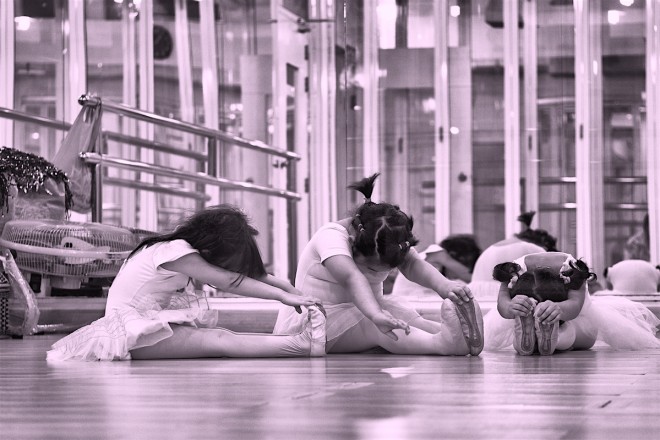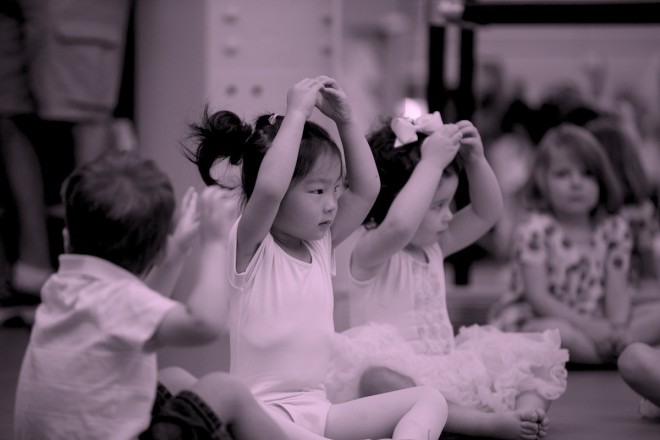Sometimes in our dance studio careers things change. We realize for whatever reason, we need to shut up shop and move on. Over the years I’ve spoken to many teachers and studio directors who at some point felt they needed to sell their studio and quite often didn’t know how to go about it.
A few years ago I decided to design my own preschool dance program. Fortunately for me, it was successful and within a few months I had full classes, two teachers and 2 studio locations. I operated the business from the opposite side of the country and handled the enquiries and the marketing. It was run as a very tight ship. After a couple of years a few new opportunities arose for me and I decided I needed to sell the studio.
The studio was located in a medium-sized country town with a smaller studio in a small country town, I knew I needed to sell quickly (within 6 weeks) otherwise the school would lose momentum and dwindle away.
I knew it would be hard to find a buyer and after a fair bit of outreach, a lovely mother who already ran a children’s business decided to buy it. Luckily, I had created such a well run business the transaction was smooth, the buyer paid in full, we had a chat over the phone for a couple of hours about the running of the business and I emailed her all the relevant documentation she would need to hit the ground running.
It was one of the easiest sales transactions I’d ever done and I believe this is because I’d drawn all my business and marketing skills together and created a very ‘sellable’ business.

The Top 10 Things You Need to Make the Sale Quick & Easy:
1. Systems – Every piece of your studio needs to be arranged with systems. Imagine your dance studio has all these different departments – staff, finances, marketing, customers, students, etc. and then systemize each process you carry out within those departments.
2. Legal – Is all your insurance, superannuation and workers compensation in order?
3. Accounts – Is your business profitable? Ensure your P/L statements and income and outgoings are all accounted for, written up and well organized.
4. Studio Director – Some studio directors are ‘the business’ by that I mean the studio is built around them and their name. Whereas some studios have a range of teachers and the studio director is one of them and is not as front and center. So, how separate are you from the business versus how integral are you, personally, to the business’ success? Potential buyers will want to know this as it plays a key part in the ongoing success of the school.
5. Market Share – Knowing how much of the market you hold within your area is important. Are you a newly established school so, therefore, not well-known? Or are you the most well-known in the area? This will have some impact on the ‘value’ that is perceived by a potential buyer.
6. Marketing/Branding Collateral – Do you have a strong name and logo and can the new owners buy it? Do you have it trademarked? If a potential buyer wants to buy your branding ensure you are upfront with them and tell them the full story regarding the IP and how much they may need to pay to buy the trademark as well as the logos.
7. Attraction Strategy – How much marketing are you doing? What are all your marketing plans and funnels and what aspects of your marketing output attracts the most students? Having a strong idea of what strategies are the most successful is critical.
You want to also have an understanding of the financial analysis regarding marketing and student acquisition. How much does it cost you to get a new student? This is based on how much marketing you have to do and then the conversion rate of that marketing into a paying student.
8. New Owner Acceptance – Sitting down and assessing how you think your teachers, students and parents will react to a new owner is important. This will ensure you’re sensitive with the handover process and you approach the sale with respect and humility. People do get upset and they do get disappointed but being upfront and honest is key, so explaining that this sale is something you really have to do will, over time, be understood.
9. Business valuation – Businesses are generally valued on their profit, so what’s the turnover and then what’s the net profit? Some value is placed on original IP, goodwill, reputation and brand but not very much. The main focus for any buyer or accountant who is looking through figures is the dollars. At the end of the day your studio is a business and people want to know it is robust and strong.
10. Student Value – Every person I spoke to asked me the value per student meaning, how much did a single student bring into the studio in a term and a year? It’s difficult when students do all sorts of classes and programs but it’s important to sit down and nut out as best as possible the overall idea of what a student brings into the studio in terms of revenue.
Don’t include any additional things like costume fees, merchandise or anything like that, that’s cream. Just strip it back to the term and yearly fees and try to gain a good idea of what each student brings in.
People will also want to know the lifecycle of a student – how long does a student tend to stay? 6 months, 2 years? This can be found out by looking at new year’s enrollments and then seeing who has dropped off by the end of the year and calculating some ratios around numbers of people who stay a term, a year, 2 years and more.
(Bonus Point) Comparable Sales – One of the other things to do is to look at other studios that have sold within your area. Although every school is very different, it will give you an idea of the price people may pay. You can assess all the things they’re offering from classes to facilities and assess how your school stacks up.
I would only look at sales as far back as about 18 months because economies and values change very quickly. Gain an understanding of where your school fits and then think about what you would put forward as an asking price.
You may decide to go with a business broker depending on the size of your studio or you may not. They take a fee and you want someone who has a good idea of dance studios, likes them, and is going to do their best to sell it for you.

Just Business? Maybe not.
You may also find you’re a bit picky with who you want to sell your studio to and that’s completely understandable as it is something you’ve built and created and you want to pass it on to someone you believe will make it flourish. I chatted to several interested people and I knew some of them wouldn’t have the skills to make it work.
They do say there shouldn’t be any emotion in business and to just go with the best price and that may be best for you, but if you feel there will be a twinge of emotion still attached to it, you may want to think about who you sell it to.
At the end of the day, selling your studio may be a need or it may be a want and whatever happens you want to feel comfortable and positive about it. In rounding up, most buyers will only be focused on and interested in the figures so make sure your financials are tight.
Selling my studio was the right move for me at the right time and it felt good so make sure you’ve fully assessed your life, your plans and your focus moving forward so it’s a great move in the future direction of your career and life.

Emma Franklin Bell is an entrepreneur, author and mentor. In 2014 she sold 2 small businesses in the children’s entertainment space, wrote and published a book and mentors dance teachers on the strategic direction of their business. The book ‘How to Run a Preschool Dance Studio’ The 7 Step System to Create, Grow and Expand Your Preschool Classes can be bought at www.howtorunapreschooldancestudio.com or the paperback version can be bought at Amazon.

Dance Advantage welcomes guest posts from other dance teachers, students, parents, professionals, or those knowledgeable in related fields. If you are interested in having your article published at Dance Advantage, please see the following info on submitting a guest post. Read posts from guest contributors.

